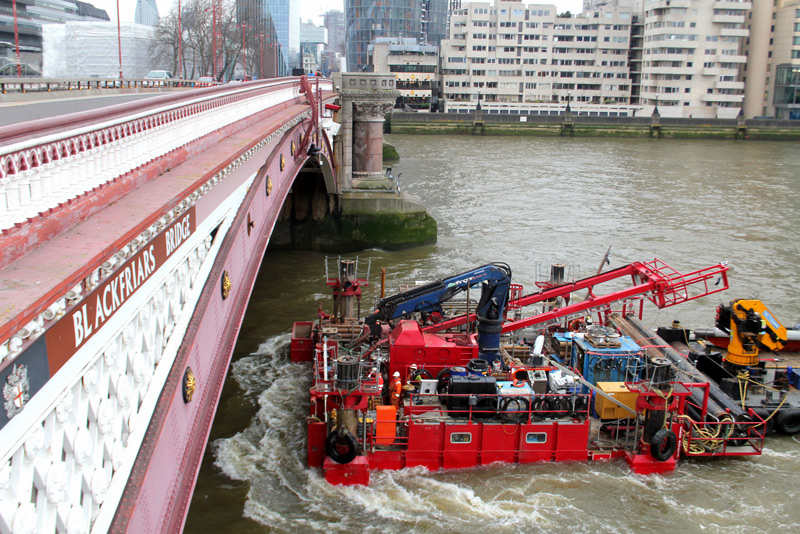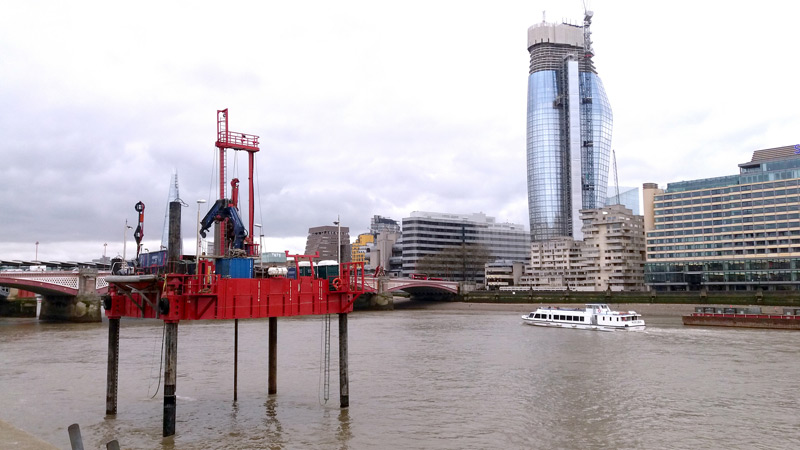Fugro completes Tideway investigation work
12 April 2018Great Britain – Geotechnical investigation company Fugro has completed projects for Ferrovial Agroman and Laing O’Rourke, the JV undertaking the central section of Thames Tideway.
The seven-month programme involved drilling, downhole geophysics and testing to a depth of 80m to provide ground risk and engineering data along a 10km stretch of the river.
Efficiency in cycle-time and river transit was crucial in delivering information from over 40 borehole and Cone Penetration Test (CPT) locations in tidal waters to suit the phasing of planning and design.
A spokesperson said, “Fugro designed, manufactured and installed adaptations to the Skate 2D jack-up barge allowing leg handling and leg storage to be carried out by a single, self-equipped vessel, in addition to carrying a full suite of geotechnical drilling, sampling and testing equipment capable of being mechanically folded.
“Using engineering proven on global marine projects, Fugro technicians reconfigured the platform deck to accommodate a centrally located, high capacity crane. This provided the capability to self-lift the jack-up legs between a storage cradle on the stern of the vessel and positions at the platform jacking corners to allow execution of height restricted bridge manoeuvres. The solution eliminated the need for a support barge and crane to install, remove and transport the legs when passing under bridges.
“Having used the self-removing leg system to reduce jack-up height and enable bridge manoeuvres on previous Thames projects, Fugro believes that the addition of the onboard storage cradle is a first for a modular jack-up undertaking geotechnical work on the river.”
A total of 25 boreholes were drilled using a combination of cable percussive, rotary and directional methods to depths ranging between 25 and 79 metres. A programme of downhole geophysics and in situ testing provided further, high resolution geological and geotechnical data. Cone penetration testing was carried out at 19 locations, many of which used the seismic piezocone to deliver key information on geotechnical parameters.


